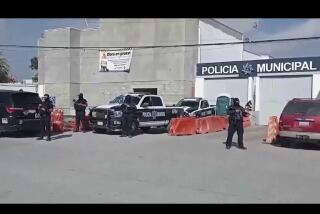Tsunami Warning Posted, but Soon Lifted
The magnitude 8.0 earthquake off Japan’s Hokkaido island generated tsunami concerns for Alaska and the West Coast on Thursday, but officials soon dropped all warnings and said that the most that might occur on the California coast would be “small sea level changes” around midnight.
Right after the quake, the Pacific Tsunami Warning Center in Alaska issued a tsunami warning for the Aleutian Islands, a “watch” for Alaska and British Columbia, and an “information-only bulletin” for Washington, Oregon and California.
Concern dropped sharply, scientists said, after the highest wave to strike Japan after the undersea earthquake was only about 7 feet high.
Such a minor tsunami close to the earthquake epicenter meant that the likelihood of a big one thousands of miles across the Pacific was negligible, said Jose Borrero, a USC tsunami researcher, and Tousson Toppozada of the California Geological Survey.
A tsunami can be generated by an undersea earthquake, a volcanic eruption or a big landslide affecting the ocean -- anything, in short, that causes a sudden displacement of water. Once the wave is generated, it can cross the ocean at speeds as high as 500 mph, bunching up near land to form waves that, at their worst, can rise 60 feet or higher.
The last large tsunami to strike California occurred after the great March 27, 1964, Alaskan earthquake. It killed 10 people in Crescent City, Calif., and one in the nearby town of Klamath. That tsunami was also responsible for a surge of water that caused about $1 million in damage at Marina del Rey and the Los Angeles Harbor.
However, as Borrero said Thursday, it remains unclear just what process initiates the waves.
They occur in some undersea quakes and other disturbances, but not others, and the distinction is not yet understood. Quakes less than magnitude 6.5 rarely generate sizable tsunamis, said Eric Geist, a tsunami researcher at the U.S. Geological Survey in Menlo Park.
So when a quake occurs like the one that struck early today (Japanese time), scientists must watch and wait to see whether threatening tsunamis actually develop.
More to Read
Start your day right
Sign up for Essential California for news, features and recommendations from the L.A. Times and beyond in your inbox six days a week.
You may occasionally receive promotional content from the Los Angeles Times.






